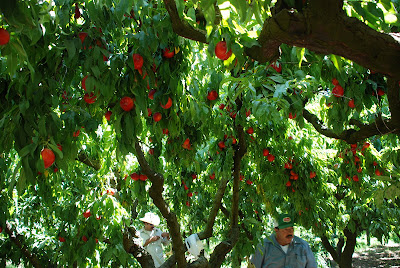These are all "yellow cling peaches." Peaches you usually find on grocery aisles are "free stone" peaches where the flesh of the fruit doesn't stick to the stone. But, peaches grown in our ranch are all cling-stone peaches. These are supposed to be more flavorful (smell beautiful), less juicy, more firm and just as sweet if not sweeter. In summary, yellow cling peaches are way better tasting than freestone peaches. So, look for them in whole foods or specialty produce stores.
We supply all of our peaches to Del Monte, which cans them in a nearby factory.
It seems as though they discard a lot of peaches, but in fact it is a minuscule percentage of picked fruit and are considered of "inferior quality" by Del Monte. However, I just don't understand why the pickers are not trained to leave them on the trees.
All these picked peaches are going to their Modesto Canning facility where they are going to remove the skin, pit them, slice them up and store them up in 10 lb cans. I am told, these cans will be utilized all throughout the coming year for mixing in yogurts, making small fruit cups, etc.

















































